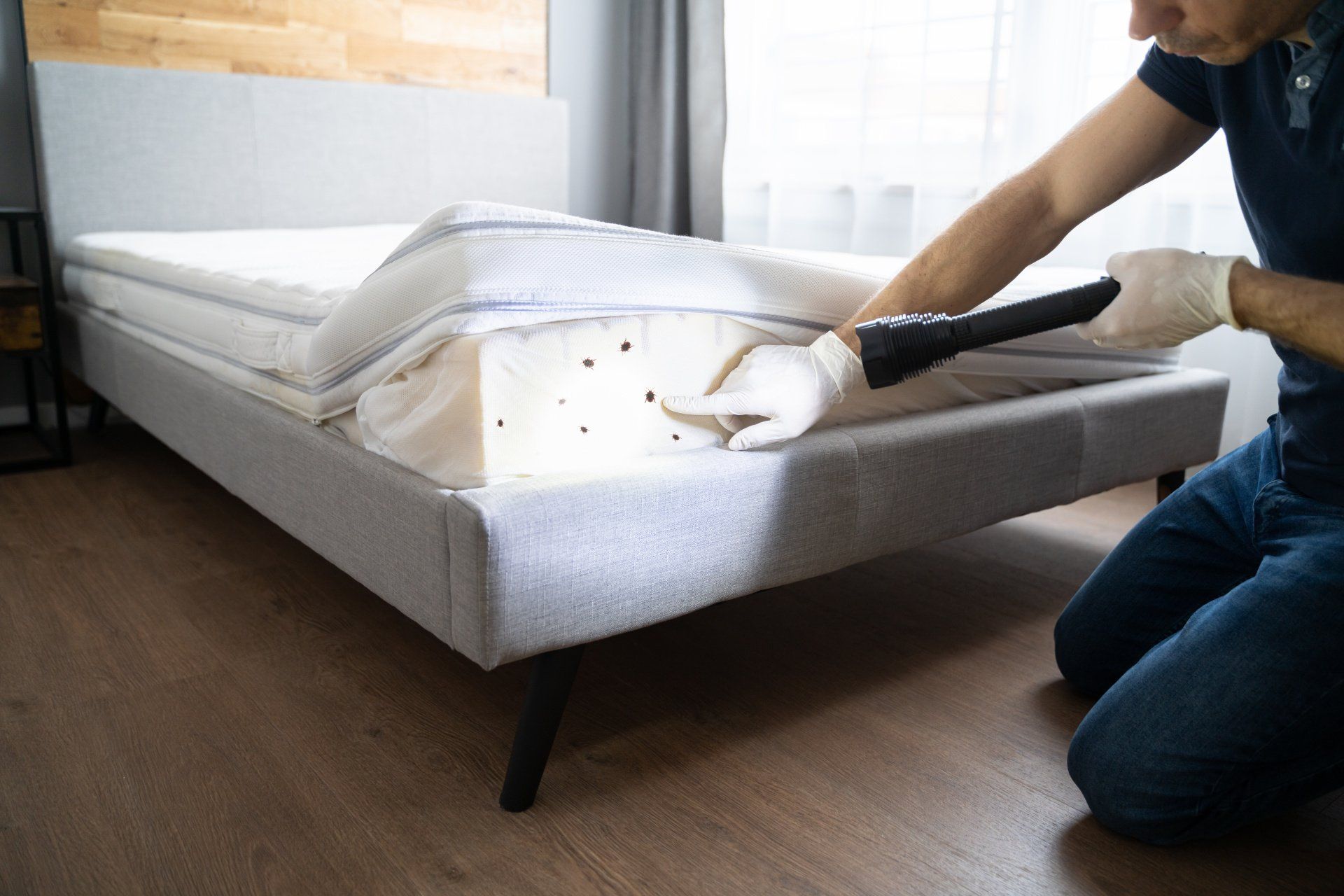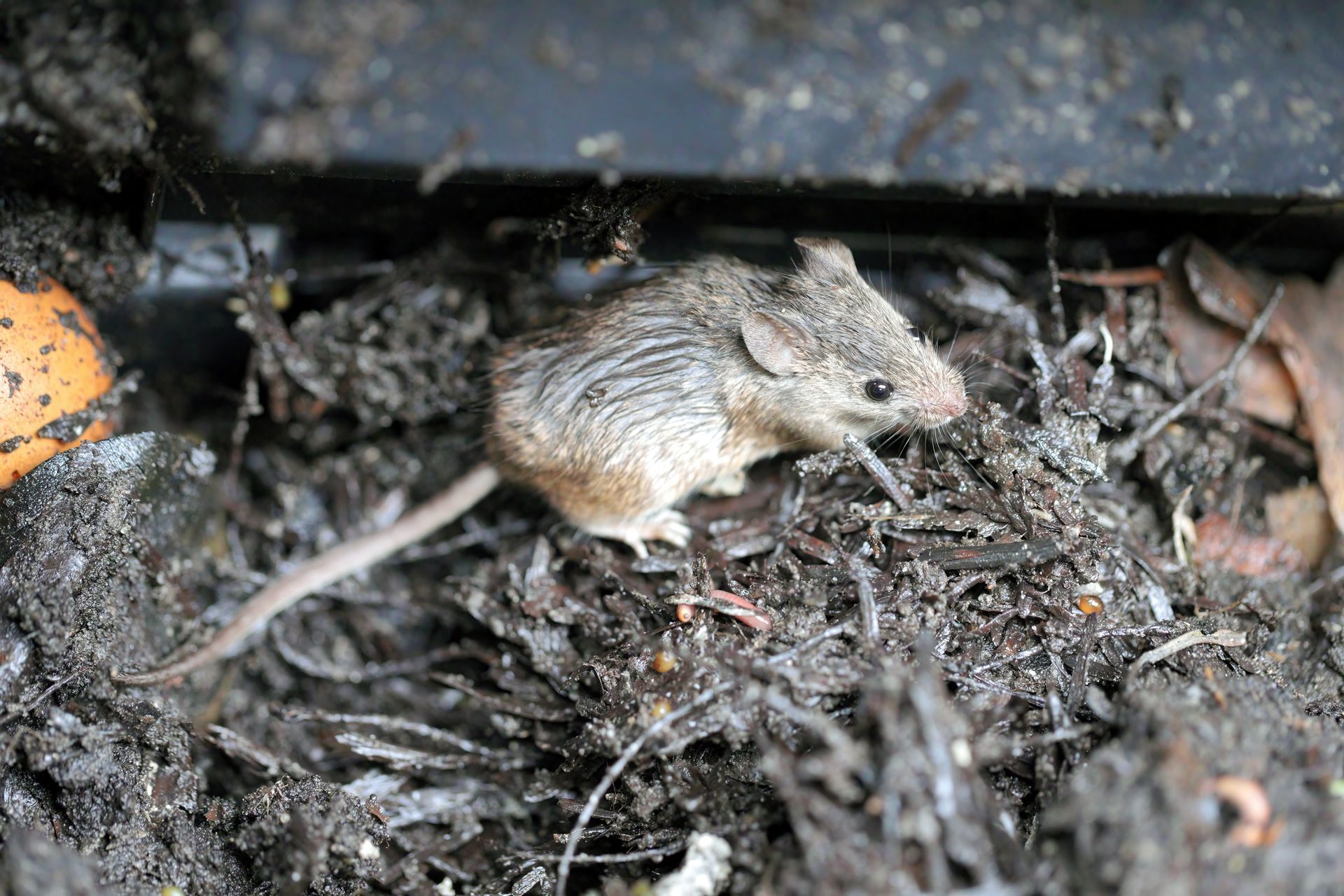How to Check for Bed Bugs

Finding out that you are being bitten at night by bed bugs is a terrifying thought that ultimately results in sleep interruption, paranoia, insomnia, anxiety, fear, and even degrees of PTSD. It is important that you identify a bed bug problem as early in the infestation as possible to increase your chance of successfully eradicating the bed bugs. To do this, individuals must know how and where to look so they can detect these blood sucking parasites early. Without understanding how to check for bed bugs, there may be problematic areas that are overlooked which will allow bed bug populations to return. If this happens, it will inevitably increase the negative mental impacts bed bugs have on a home’s inhabitants. If you are seeing signs of unexplained bites that seem to appear after waking up, then it is important to go through and inspect for bed bugs immediately to ensure that they are not the culprit. If they are, finding where they are at is the first step in effectively exterminating bed bug populations.
How to Find Bed Bugs During the Day
Finding bed bugs is best done during the day because bed bugs hide during the day and also because there is enough light out. Daytime bed bug inspections require a quick preparation and knowing what to look for and where.
Prepare for a Bed Bug Inspection
Bed bugs are typically well hidden and rarely exposed during the day which makes them difficult to find. When searching for bed bugs, it is important that you prepare yourself to find different clusters of active bed bug populations and other indicators of bed bug activity. To do this, it is best if an individual wears protective gloves that prevent actual contact in the event that bed bugs are discovered. This will allow the inspector to check stains to see if they smear as well as explore areas without the fear of actually accidentally touching live bed bugs.
Know What Bed Bug Signs to Look For
Having bites appear isn’t always a sign of a bed bug infestation. There could be other bugs like fleas, ticks, or mosquitoes that are prompting the irritating bite marks. To determine if your problem is being caused by a rampant bed bug infestation, you should look for other common bed bug signs like:
- Dark reddish or brown stains or smear of bed bug feces
- Stains of dried blood
- Bed bug eggs
- Molted bed bug exoskeletons
- Live bed bugs or bed bug nymphs
Any of these common indicators are a telling sign that you are dealing with bed bugs. Finding any of these should prompt a more thorough inspection that is done by an experienced bed bug control expert. They have experience dealing with theses bugs so they will know where to check for signs of activity.
Be Sure to Check Common Hiding Spots for Bed Bugs
Once you have gloved up, use a flashlight to inspect different common hiding areas that bed bugs are usually found. Remember that bed bugs are attracted to warmth and CO2 and will generally stay in places near where their source of food is. These spaces include around beds, mattresses and box springs, mattress covers, bedding, and bed frames. Be sure to check each crack and crevice where they may be hiding, including the seams and corners of the mattress, under bed slats, and in the cracks in between the wooden pieces in the bed frame. Also check the bedding for signs of blood stains that might appear due to recent bites or bed bugs that may have been smashed while feeding. Bed bugs will also end up where human sit for extended periods so be sure to check chairs and couches. This also means checking the upholstery from top to bottom including around cushions, pillows, and zippers and any spaces in the wooden framing they might be able to access. This can be particularly difficult because the interior of furniture can be hard to access.
Be Sure to Check Uncommon Bed Bug Hiding Places
In addition to spaces near where humans sleep and sit, bed bugs will explore just about everywhere else to see if they can find another host to feed on. This is particularly true when an infestation gets out of hand and there are too many bed bugs in one particular area. When this occurs, bed bugs will expand their territory and explore other places like:
- the wood framing of dressers, wardrobes, and nightstands
- in curtains, drapes, and carpets
- behind picture frames and loose wallpaper
- inside electronics around the bed like alarm clocks
- inside electrical outlets
- around baseboards
- in clothing
- in the joints and corners of closets
- under lamps and inside lamp shades
Bed bugs are particularly drawn towards tight spaces because it provides them a safe place to hide and lay eggs, so it is important to check where wooden framing meets and inside screw holes. Also be sure to pull out drawers to inspect the wooden joints and under each drawer.
How to Check for Bed Bugs at a Hotel
The best way to prevent bed bugs in your home is to never introduce them. Since bed bugs are notorious for hitchhiking from accommodations while traveling, it is important to know how to check for bed bugs at different hotel rooms, motels, and Airbnbs. When you first enter any accommodation, be sure to leave your luggage somewhere on tiled floor if possible. It is important to remember that bed bugs can be found in places like the crevices of luggage racks and in the wooden joints of desks and dressers, so it isn’t recommended that your luggage is stored there during inspection. Under no circumstances should your luggage be placed on the bed or furniture before inspection is completed. Be sure to look for signs of bed bugs by:
- Inspect the bed by pulling back bedding to inspect the seams of the mattress
- Lifting the mattress to check the joints and slats of the box spring and bed frame
- Checking around the seams of the mattress label
- Checking the upholstery of any furniture including couches or chairs
- Checking the framing and drawers of dressers and nightstands
- Checking around any electronics and outlets by the bed
Even if the inspection does not turn anything up, it helps to keep your luggage centralized somewhere where bed bug activity is least likely to be. It is also helpful to wash and dry any luggage on high heat upon returning from a hotel to ensure any hitchhiking bed bugs are killed by extreme temperatures.
Be Sure to Check for Bed Bugs on Used Furniture
Seeing secondhand furniture for cheap can be appealing but sometimes that price that is too good to be true, is exactly that. This is particularly true for free furniture that is left out on the road for pickup. If the furniture is infested with bed bugs, you will be introducing a massive infestation into your home. Not to say that secondhand furniture isn’t worth checking out, but it is definitely worth the time and effort to carefully inspect the furniture for bed bug activity. Be sure to check the crevices in the upholstery, any cushions, zippers, and around the wooden under carriage to ensure there are no dried bed bug feces or blood stains and active bed bugs.
Contact EcoGuard Pest Management to Get a Professional Bed Bug Inspection
If you have found signs of bed bug activity in your home, getting a professional out to inspect further is recommended. This is because trying to treat bed bugs without understanding all of the places they are hiding will likely leave remaining bed bugs to repopulate after treatment. A professional bed bug control expert will come in and inspect your home and all of the places that bed bugs hide to determine where problematic areas are and how to effectively treat them to exterminate all bed bugs. Call EcoGuard Pest Management to schedule an inspection today so we can send out one of our licensed and trained bed bug exterminators immediately!

















